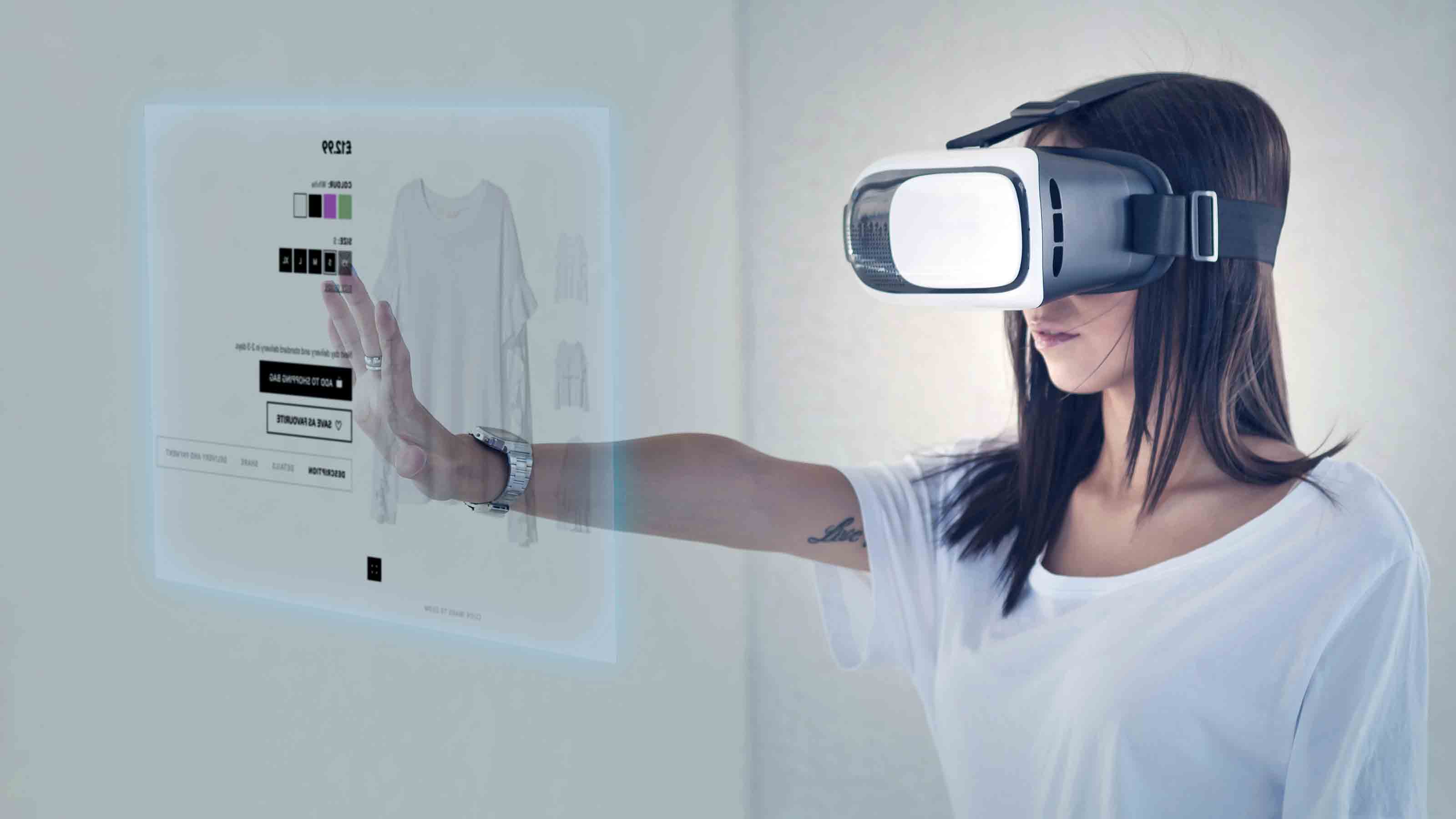What Is Digital Fashion, And Why Is It Important?
Fashion is one of the purest forms of self-expression. Digital fashion simply brings this to a new medium - and could be worth billions in just a few years.


From Big Tech boardrooms to podcasts and tweets, the metaverse hype is everywhere. However, as with many emerging technologies, excitement around the expected future impact often outshines its actual readiness for mainstream adoption.
But even among all the hoopla, it's foolish to dismiss Web3 and the metaverse completely. Within the next decade, emerging technologies might change life as we know it. In the same way, the television and the internet democratized access to information and entertainment, the blockchain and the metaverse will change the way we shop, game, and craft our digital identities.
Whether physical or digital, fashion is a core layer of our being. It serves as one of the purest forms of self-expression while acting as a direct extension of our emotions and beliefs. As humans, we care deeply about our appearance and as we spend more time in virtual environments, the same behavior is expected to continue. By 2030, Morgan Stanley estimates that the digital fashion market alone could be worth $50 billion.

Sign up for Kiplinger’s Free E-Newsletters
Profit and prosper with the best of expert advice on investing, taxes, retirement, personal finance and more - straight to your e-mail.
Profit and prosper with the best of expert advice - straight to your e-mail.
While this prediction is ambitious, and far from a guarantee, industry leaders have recognized the potential and are already beginning to heavily invest in the trend:
- Nike (NKE) acquired RTFKT and announced the launch of CryptoKicks, alongside their own virtual world in Roblox (RBLX).
- Rebecca Minkoff partnered with The Dematerialised to release a collection of NFT dresses, hoodies, and accessories.
- Bob Iger invested an undisclosed sum into Genies, a company that produces metaverse-ready digital avatars for stars like Jennifer Lopez, Rihanna and Lil Nas X.
With that in mind, there's a compelling case that the winners of this emerging sector could be sound investments for years to come. But before we even think about investing, it's important to cover the basics of digital fashion.
What Is Digital Fashion?
Digital fashion is virtual 3D clothing designed with both humans and digital avatars in mind. Rather than using fabric and textiles, digital garments are created with special 3D computer programs like Blender and CLO3D.
Relative to traditional garment manufacturing, digital fashion is inexpensive and wildly sustainable. More importantly, it comes with zero creative constraints or production limitations. This is where the true beauty of digital fashion shines. The only limits are our imaginations. We don't need to be the same people online as we are in real life. We can be whoever we want to be.
According to Jackson Bridges, NFT Project Advisor and Showcase Guide at Alterrage, digital fashion allows for a new medium for individual expression.
"In the metaverse, we can decide our own identities compared to the physical world in which we cannot choose our own race, gender, or cultural background. Digital fashion builds upon this idea by enhancing self-expression outside of the constraints of the physical world and by leveraging technologies such as augmented and virtual reality. The ability for one to express themselves with limitless creative freedom unlocks doors for a true expression of one's identity," he shared in an interview with Kiplinger.
To date, digital fashion has been most prevalent in gaming, where gamers pay billions of dollars per year to outfit their digital avatars in the latest cosmetic skins. Epic Games, the company behind Fortnite, sold 3.3 million units of their NFL partnership skins, netting a cool $50 million in only a few weeks.
How Do You Wear Digital Clothes and Accessories in the Physical World?
Outside of gaming, digital dressing is the most practical way for shoppers to showcase their digital style. By altering photos and using advanced technologies like augmented reality and artificial intelligence, consumers can actually wear their digital garments.
For digitally-native apparel retailers like DRESSX, digital dressing is built into their business model. Customers who purchase digital garments from DressX can upload a photo to the platform to have themselves digitally dressed in their new look. For social media influencers who often spend thousands of dollars on an outfit only to return it moments after a photo is taken, wearing digital fashion offers a much more efficient and cost-effective alternative.
Snapchat (SNAP), a leader in augmented reality technology, has offered a variety of AR filters since its inception. Snap has also partnered with companies such as Prada and Ulta (ULTA) to offer customers virtual try-on experiences, which have resulted in substantial sales lifts.
To encourage more retailers to adopt AR-powered ecommerce, Snapchat has made its proprietary technology free to use. Now retailers can seamlessly integrate Snap's AR try-on technology and Camera Kit into their own mobile apps and websites.
Why Is Digital Fashion Important?
To fully recognize the importance of digital fashion, you must first understand the desire for digital identity and ownership. Among digitally native generations, there is strong demand for digital ownership and the ability to express our identity the same way we do in real life.
Based on a report from BoF Insights, approximately 70% of US general consumers (Gen Z to Gen X) rate their digital identity as important. And they're voting with their wallets, with 50% interested in purchasing a digital asset in the next 12 months (gaming skin, digital fashion, avatar, and/or NFT.)
While still incredibly early, digital fashion is positioned to be a significant revenue driver for apparel retailers. Over the last year, brands such as Gucci, Tommy Hilfiger, and Dolce & Gabbana have invested millions of dollars in opening virtual metaverse storefronts where they've sold a mix of digital fashion NFTs and NFTs redeemable for physical goods. The virtual stores also allow customers to shop through on-site ecommerce collections.
As explained by Nico Fara, a retail Web3 strategist and founder of Chief Metaverse Officer, virtual stores in the metaverse aren't replacing traditional retail channels, but are instead serving as a much-needed complement.
"In the same way that retailers need a brick-and-mortar or ecommerce store (Web 1.0) and a social media page (Web 2.0), they should have a metaverse presence (Web 3.0). Virtual stores in the metaverse are more efficient, immersive, and accessible than any other retail experience."
Like all new tech trends, there will be companies that invest in the hype for PR and quick cash. But there will be others that make digital fashion a core part of their future retail strategy. Whether the winners will be legacy fashion and tech companies, digitally native retailers, or a combination of both, only time will tell. But when industry players of this caliber all make a move, it's generally one worth paying attention to.
Profit and prosper with the best of Kiplinger's advice on investing, taxes, retirement, personal finance and much more. Delivered daily. Enter your email in the box and click Sign Me Up.

Randy is a New York-based freelance writer and author covering the world of emerging technology and entrepreneurship. Deeply interested in the way technology will impact his grandkids' lives, Randy has been featured in several publications, including NFT Now, Forbes and Newsweek.
-
 AI vs the Stock Market: How Did Alphabet, Nike and Industrial Stocks Perform in June?
AI vs the Stock Market: How Did Alphabet, Nike and Industrial Stocks Perform in June?AI is a new tool to help investors analyze data, but can it beat the stock market? Here's how a chatbot's stock picks fared in June.
-
 Stock Market Today: A Historic Quarter Closes on High Notes
Stock Market Today: A Historic Quarter Closes on High Notes"All's well that ends well" is one way to describe the second quarter of 2025, at least from a pure price-action perspective.
-
 My Three-Day Rule for Investing: And If it Applies Now
My Three-Day Rule for Investing: And If it Applies NowStock Market I've seen a lot in my career. Here's what I see now in the stock market.
-
 Is It Time to Invest in Europe?
Is It Time to Invest in Europe?Stock Market Europe is being shaken out of its lethargy, militarily and otherwise, by Donald Trump's changes in U.S. policy. Should investors start buying?
-
 Why Is Warren Buffett Selling So Much Stock?
Why Is Warren Buffett Selling So Much Stock?Berkshire Hathaway is dumping equities, hoarding cash and making market participants nervous.
-
 If You'd Put $1,000 Into Google Stock 20 Years Ago, Here's What You'd Have Today
If You'd Put $1,000 Into Google Stock 20 Years Ago, Here's What You'd Have TodayGoogle parent Alphabet has been a market-beating machine for ages.
-
 Stock Market Today: Stocks Retreat Ahead of Nvidia Earnings
Stock Market Today: Stocks Retreat Ahead of Nvidia EarningsMarkets lost ground on light volume Wednesday as traders keyed on AI bellwether Nvidia earnings after the close.
-
 Stock Market Today: Stocks Edge Higher With Nvidia Earnings in Focus
Stock Market Today: Stocks Edge Higher With Nvidia Earnings in FocusNvidia stock gained ground ahead of tomorrow's after-the-close earnings event, while Super Micro Computer got hit by a short seller report.
-
 Stock Market Today: Dow Hits New Record Closing High
Stock Market Today: Dow Hits New Record Closing HighThe Nasdaq Composite and S&P 500 finished in the red as semiconductor stocks struggled.
-
 Stock Market Today: Stocks Pop After Powell's Jackson Hole Speech
Stock Market Today: Stocks Pop After Powell's Jackson Hole SpeechFed Chair Powell's Jackson Hole speech struck a dovish tone which sent stocks soaring Friday.